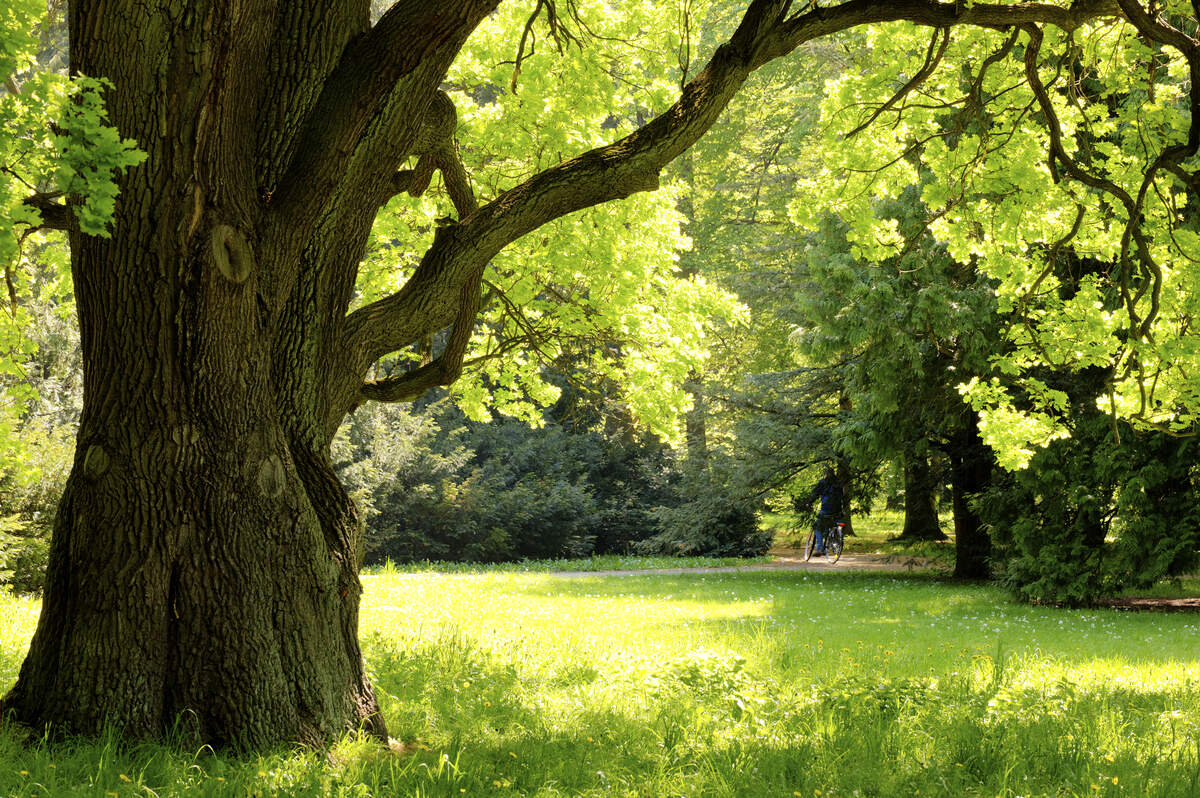
White oak trees are majestic symbols of strength and endurance, standing tall and proud in forests across North America. These iconic trees have long been revered for their beauty, resilience, and versatility. In this article, we'll delve into 11 fascinating facts about white oak trees, shedding light on their rich history, ecological significance, and cultural impact. From their vital role in supporting diverse ecosystems to their use in crafting exquisite furniture and barrels for aging fine wines and spirits, white oak trees have left an indelible mark on both the natural world and human civilization. Join us as we embark on a journey to uncover the remarkable characteristics and contributions of these remarkable trees.
Key Takeaways:
- White oak trees are long-lived symbols of strength, with wood prized for furniture and shipbuilding. They support diverse ecosystems and have medicinal uses, making them invaluable in the natural world.
- White oak trees, native to North America, provide essential habitats and are culturally significant. Their distinctive leaves and drought tolerance make them vital in arid regions, enriching our lives in countless ways.
White Oak Trees Are Long-Lived
These remarkable trees have an impressive lifespan, often living for several centuries. Their endurance and resilience make them a symbol of strength and longevity in many cultures.
White Oak Trees Are Native to North America
These iconic trees are indigenous to North America, where they thrive in diverse climates and environments, from the eastern United States to southern Canada.
White Oak Trees Provide Essential Habitat
Their broad canopies and sturdy trunks create vital habitats for numerous species of birds, mammals, and insects, contributing to the rich biodiversity of their ecosystems.
White Oak Wood Is Highly Valued
The wood of white oak trees is prized for its durability, strength, and attractive grain, making it a preferred choice for furniture, flooring, barrels, and even shipbuilding.
White Oak Trees Are a Symbol of Endurance
Throughout history, white oak trees have been revered for their ability to withstand the test of time, making them a potent symbol of endurance and fortitude.
White Oak Trees Support Diverse Ecosystems
These trees play a crucial role in supporting a wide range of plant and animal species, fostering complex and interconnected ecosystems that rely on their presence.
White Oak Leaves Have Distinctive Lobes
The leaves of white oak trees are characterized by their rounded lobes and vibrant green color, adding to the visual allure of these magnificent trees.
White Oak Trees Are Drought-Tolerant
Their ability to thrive in dry conditions and withstand periods of drought makes white oak trees invaluable in arid and semi-arid regions.
White Oak Trees Have Medicinal Uses
Various parts of the white oak tree, including the bark and acorns, have been utilized in traditional medicine for their astringent and anti-inflammatory properties.
White Oak Trees Are Prized for Their Acorns
The acorns produced by white oak trees serve as a crucial food source for numerous wildlife species, playing a vital role in the food chain.
White Oak Trees Are Culturally Significant
These majestic trees hold deep cultural and historical significance, featuring prominently in folklore, art, and the traditions of indigenous communities.
White oak trees stand as enduring symbols of resilience, vitality, and interconnectedness within the natural world, enriching our lives in countless ways. Their profound impact on ecosystems, industries, and cultural heritage underscores the importance of preserving and appreciating these remarkable trees.
Conclusion
In conclusion, white oak trees are truly remarkable and play a vital role in our ecosystems. From their majestic appearance to their invaluable contributions to various industries, these trees are undeniably significant. Understanding the lifecycle and characteristics of white oak trees allows us to appreciate their importance and work towards their conservation. With their resilience and versatility, white oak trees continue to inspire awe and admiration, serving as a testament to the wonders of the natural world.
FAQs
What are the main uses of white oak trees?
White oak trees are highly valued for their strong and durable wood, which is utilized in the construction of furniture, flooring, barrels, and even ships. Additionally, their acorns provide essential sustenance for wildlife, contributing to the biodiversity of forests.
How long does it take for a white oak tree to reach maturity?
White oak trees typically take around 50 to 100 years to reach full maturity, at which point they can live for several centuries. This longevity underscores their significance in both natural and cultural contexts.
Was this page helpful?
Our commitment to delivering trustworthy and engaging content is at the heart of what we do. Each fact on our site is contributed by real users like you, bringing a wealth of diverse insights and information. To ensure the highest standards of accuracy and reliability, our dedicated editors meticulously review each submission. This process guarantees that the facts we share are not only fascinating but also credible. Trust in our commitment to quality and authenticity as you explore and learn with us.
